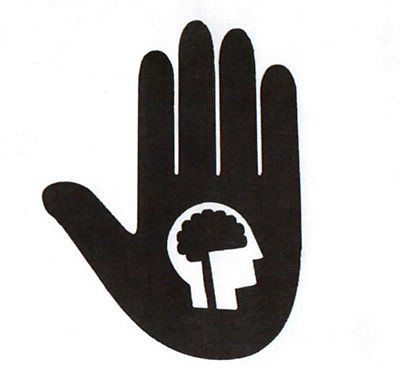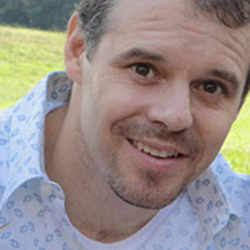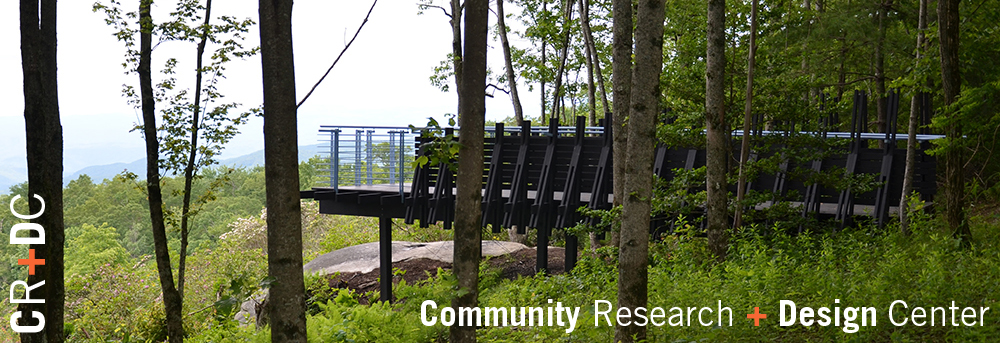Community Research and Design Center
About Us
The College established the Community Research and Design Center in 2001. Directed by Professor Daniel Harding, the Center coordinates public service projects within the College from an interdisciplinary perspective and provides assistance to local communities, provides a mechanism to conduct research and serves as an applied research laboratory for Clemson students.
The Center has worked on state, regional, and local planning projects such as river corridors, transportation modeling, alternative land use and environment impacts related to transportation, regional planning, and land use regulation procedures. A major focus of the center regards the issue of urban sprawl.
The Center's primary mission is to encourage efficient and equitable management of growth and change in the natural and built environment. The Center works with policy-makers and the community to promote policies and best practices towards achieving quality urban development in concert with conservation of environmental quality that promotes a strong economy and community livability. Furthermore, the Center emphasizes the cultural heritage of communities as a foundation for attaining a high quality of life. The Center provides a forum for positive exchange of ideas and information about quality communities in a growth environment.
Message from the Director
Placing the work of CR+DC in context, our projects target threads of importance adhering to the World Health Organization's (WHO) definition of a healthy city or community as "one that is safe with affordable housing and accessible transportation systems, work for all who want to work, a healthy and safe environment with a sustainable ecosystem and offers access to health care services which focus on prevention and staying healthy." These threads, as defined by the CR+DC, Dwelling, Resilient Networks, Agrarian, Constructive Learning, and Service, became mandatory differentiators for our project and activity selection.
Creating an internal culture built around these themes continues to bolster the CR+DC's mantra of supporting the Land Grant values and Service-Learning. Many of the CR+DC's activities bridge the academic studio and the creative research agendas of participating faculty. Aspiring to this high level of integration ensures that the developed Means + Methods and academic Core Competencies are both leveraged for success and purposefully improved upon.

MEET DAN HARDING

B.A. in Architecture from UNC Charlotte
M.Arch from Clemson University
Dan is an Associate Professor of Architecture and Community Design+Build and serves as the director of the Community Research and Design Center (CR+DC) and the Architecture + communityBUILD graduate certificate program (A+cB), striving to ensure that South Carolina communities intently embrace the social, economic, and environmental pillars of sustainability. In 2013, DesignIntelligence named Harding as one of the thirty most influential design educators in the country, citing the impact of his community-centric work. He was also named the Robert Mills Professor at Clemson for 2015/16.
Vision + Mission
-
+Vision Statement
The Community Research + Design Center (CR+DC) will lead all Clemson University centers in service-learning projects focused on community-based public interest design, student engagement, and sustainable design research that emphasizes reciprocal partnerships through collaborative, critical and creative thinking.
-
+Mission Statement
True to the nature of our land-grant heritage, the Community Research + Design Center (CR+DC) confidently navigates communities and stakeholders in South Carolina including Clemson University through social, economic, and environmental design issues. All CR+DC projects target at least one of the following areas of emphasis: advanced materials, transportation, general education, family and community living, information and communication technology, leadership and entrepreneurship, and/or the sustainable environment. The CR+DC asserts that design is a social justice and project criteria and will address the aforementioned emphasis areas while also assessing the public impact these desgin strategies and proposed solutions will have on our greater communities.
The human experience, coupled with how the built and natural environments will be mutually shaped, is the key focus with all projects; thus, the CR+DC incorporates the following in its approach:
+Service Learning - ensuring all projects are community-based and employ a student engagement componenet from stakeholder consensus, sustainable programming, planning+design to design+build.
+Partnerships and Relationships - developing strong, trusting and enduring community relationships while also embracing industry and professional partners to ensure market viability and economic sustainability.
+Appropriate scale and usefulness - engaging community research and design from the macro to the micro; from the stakeholder community visioning charretts, including brand development, master plan and landscape development in addition to architecture schematic design and building performance, to the specific and humanistic small scale product design projects including design+build installations.
Means + Methods
As a component of a Land-grant University, it is the objective of the Community Research+Design Center to ensure proactive and productive relationships with the communities of South Carolina. Likewise, we will also maintain our responsibilties to the greater community of Clemson University, its student body and faculty/staff. To assist the CR+DC in achieving these objectives, it is imperative that it maintains a unique arsenal of means and methods that allow for flexibility, mobility, and constant calibration with an ever-changing context and diverse environments. Ensuring our high level of success we commonly maintain and employ the following:
-
Means and Methods Maintained
+Charrett facilitation and management that ensures open communication and good listening
+Design+Build installations demonstrating shared values and respond to common needs with hands-on opportunities and responsibilities for project teams
+Public outreach programs that faciltate dialogue and target individuals outside the allied design disciplines
+Public exhibits and panel presentations, internal and external to the University, that ensure intellectual capital and equity get distributed to the community for the public good
+Peer review presentations and conference attendance allowing faculty and students to extend on a national and international stage, the work being done by the CR+DC, Clemson University and its partners
+Scholarship and intellectual pursuits extending the mission and vision of the CR+DC
+Research allowing for dissemination and innovation
+DESIGN-centric Service-Learning opportunities ensuring that education is impacted by forces that extend far beyond the walls of the typical classroom
+Poignant course offerings targeting key issues (required courses and elective seminars)
+Creative Inquiry course delivery and management allowing undergraduates and faculty opportunities to develop/test research ideas and respond specifically to community or societal needs
+Certificate program supporting a concentration and specialization at the graduate level in the varied facets of Public Impact Design
+Masters of Science program permitting specific research, scholarship and specialization in varied facets of Public Impact Design
+Multi-disciplinary advising (including, MS, and Ph.D) and committee roles that suport diverse networking, research and scholarship activities and service responsibilities
+Multi-disciplinary design studios offering diverse teams of faculty and students with varying expertise to pursue critical competitions, grants, and community projects that would not otherwise be afforded
+Co-taught/Collaborative design studios, seminars and creative inquiry providing faculty and students the ability to build relationships and engage innovative approaches for teaching, learning, and tools for observation
+Cooperative projects with other Centers and Fluid Campus locations (Clemson, Charleston, and Genoa)
+Student internships offering students summer and school-year hourly compensation and job opportunities with key faculty on key projects
+Student Assistantships granting students tuition waivers and unique opportunities with work directly with faculty members in varied capacities
+University and Community Service encouraging faculty and students to take initiative and be active partipants in key groups, activities, and projects
Values
Since 2010, the Community Research and Design Center (CR+DC) has expanded its reach and collective ability to provide the communities of South Carolina and Clemson University with a diverse and trusted set of deliverables. This unique offering of products, coupled with unprecedented student engagement, will continue to afford the CR+DC its ability to uphold the mantra of the College of Architecture, Art and Construction. However, with this ability comes the necessity for the CR+DC to maintain its own core values and brand as it continues to strive for excellence and its own strategic growth and enhancement. These essential values are defined in the following points:
-
+LATERAL & VERTICAL
- Be flexible; maintain mobility with lateral and vertical thinking
- Teaching, Research, Scholarship and Service are cooperative: work in a comprehensive and inclusionary manner placing student engagement at the center of all activities
- Student engagement can uniquely enhance design-based research projects and provide an innovative edge
- Recipriocal engagement: SERVICE LEARNING
- Community-based research and desgin do not occur in silos; avoid the traps found in typical academic vacuums. The community is the work place
- Ensure the studio or "atalier" is a safe place for the creative mind that supports risk, failure, and exploration to find innovation and success
- Be humble and understand the root of the problem before emparking on finding the solution
-
+DESIGN AS A VERB
- Good design must ask questions, not just answer them
- Understand asset-based design: know what exists and determine what is needed
- Do more with less and what is available
- Engage a hands-on "Grey Collar" approach by blurring the significance of doing intellectual "White Collar" work with the necessity and reality of "Blue Collar" work
- Work hard and intelligently
- Work with your hands, use toos, and trust your observations
- Employ "HANDSTORMING" and "BRAINSTORMING"
- Embrace a visceral approach and enjoy the mess
-
+EXCELLENCE
- Pursue design excellence and demand it of others
- Instill a culture that demands integrity and rigor for details
- Strive for design that enhances the human experience
- Strive for design that is critical, creative, innovative and present
- Strive for design that embraces sustainable practices and an intelligent built environment
- Push your own comfort zone
- Dream about doing the work, not just the end results






